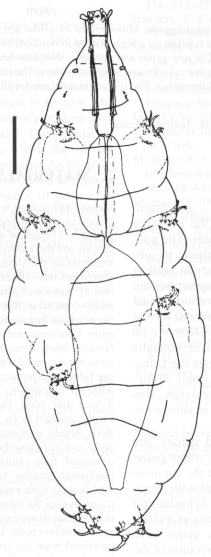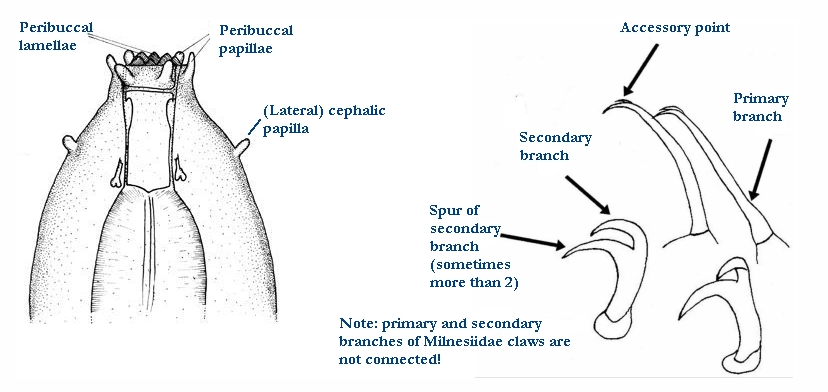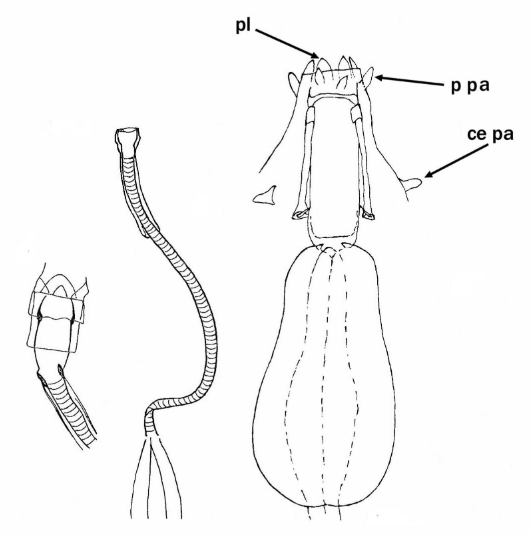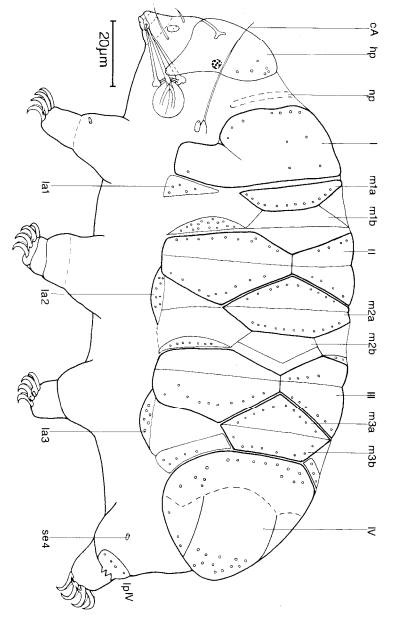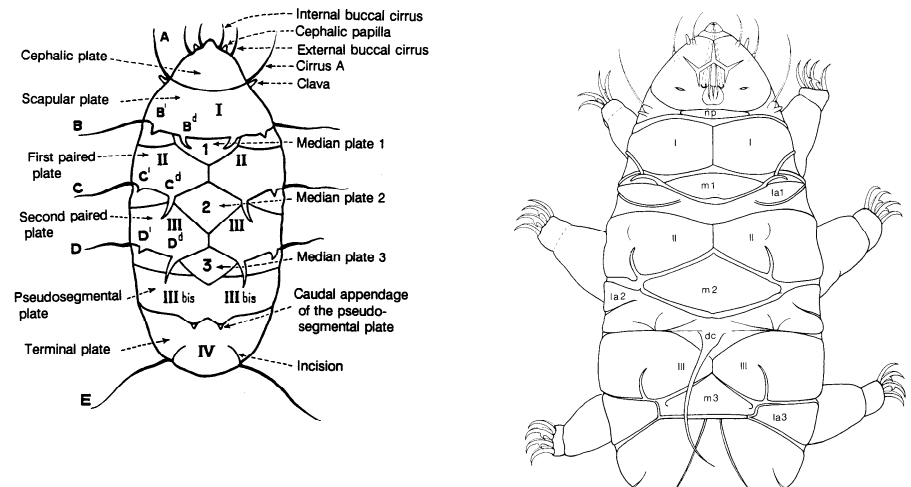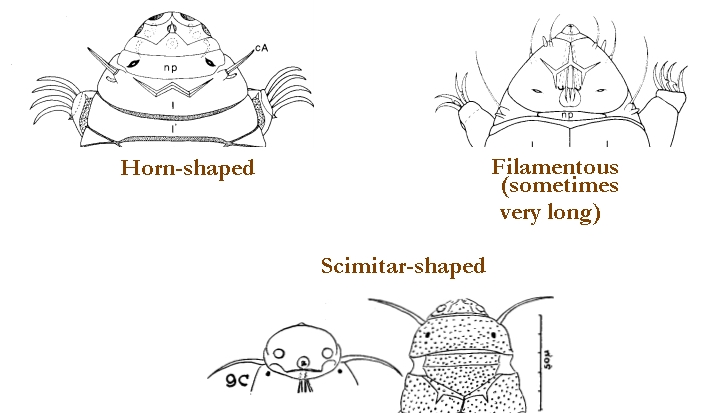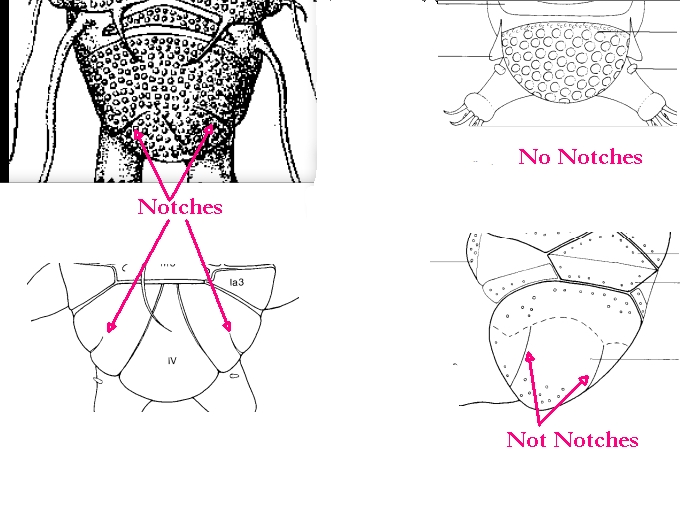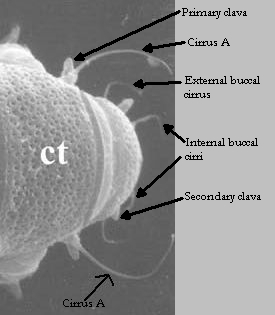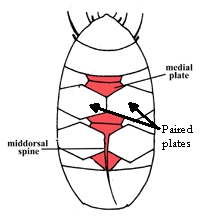Genus description from Claxton 1999: “Semi-terrestrial eutardigrade belonging to the family Milnesiidae. Mouth surrounded by six papillae and six buccal lamellae which form an operculum. Mouth at anterior of long protrusible snout. Snout enclosing long mouth cavity which is thick walled and has a cuticular ring at two thirds its length; buccal tube long and rigid. Stylets long and fine, stylet supports short and flat.”
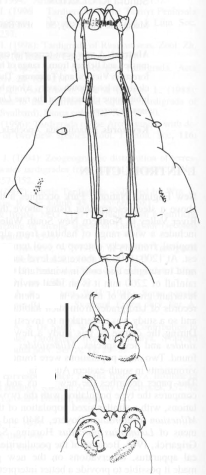
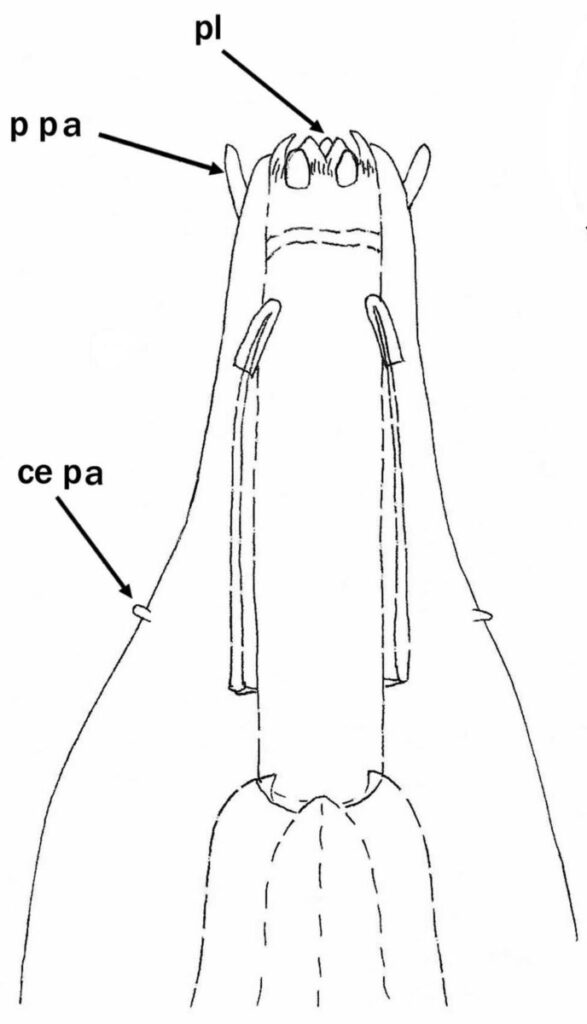
Citations:
Claxton SK. 1999. Milnesioides exsertum gen. n. sp. n., a new tardigrade from Australia (Tardigrada: Milnesiidae). Zoologischer Anzeiger. 238: 183-190.
